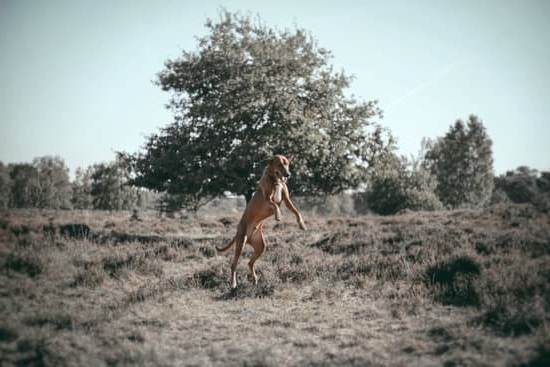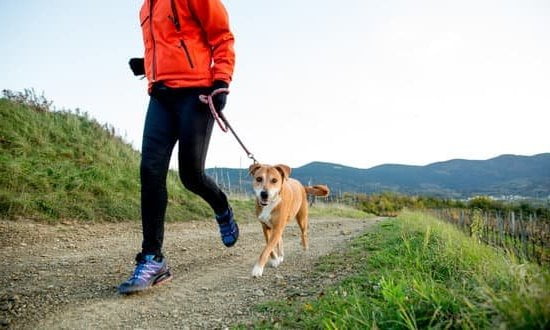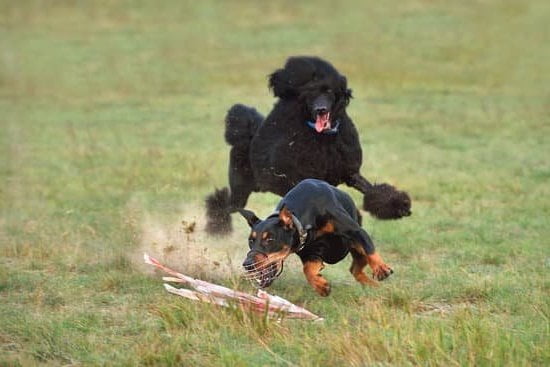Dogs chewing on things can be frustrating and destructive, but with the right training, this behavior can be curbed. In this article, we will delve into the various reasons why dogs engage in chewing behavior and discuss the importance of training to address this issue effectively. By understanding the underlying causes and implementing proper techniques, you can help your furry friend break the habit and create a chew-free environment.
Chewing is a natural behavior for dogs that serves several purposes, including dental health, teething relief, and mental stimulation. However, when directed towards inappropriate items like furniture or shoes, it becomes problematic. Training plays a crucial role in redirecting their focus to more appropriate outlets for chewing. With consistency and persistence in implementing suitable techniques, you can guide your dog to choose appropriate chew toys instead of household items.
Throughout this article, we will explore various strategies to train your dog to stop chewing on things. From addressing the correlation between exercise and chewing behavior to creating a safe environment for your pet by removing temptations, we will provide practical tips that you can implement right away. Additionally, we will discuss different training methods and how mental stimulation can help combat boredom and separation anxiety-related chewing.
By educating yourself on these aspects of canine behavior and training techniques, you are taking an important step towards resolving your dog’s chewing issues. So let’s dive in and discover effective ways to train your furry friend to stop chewing on things.
The Role of Exercise in Reducing Chewing Behavior
Regular exercise plays a crucial role in reducing chewing behavior in dogs. When dogs have pent-up energy, they often resort to chewing as a way to release it. By providing them with appropriate physical activity, owners can help redirect their dog’s energy towards more constructive behaviors. Additionally, exercise helps improve a dog’s overall well-being and mental health, reducing the likelihood of engaging in destructive chewing.
Correlation between Exercise and Chewing Behavior
There is a direct correlation between the amount of exercise a dog receives and their chewing behavior. Dogs who are not adequately exercised may become bored or anxious, leading them to seek out objects to chew on. Regular exercise helps burn off excess energy and reduces boredom, making them less likely to engage in destructive behaviors like chewing. Furthermore, exercise stimulates the production of endorphins, which helps lower a dog’s stress levels and promotes relaxation.
Tips for Incorporating Exercise into Your Dog’s Routine
To effectively reduce chewing behavior through exercise, it is important to incorporate regular physical activity into your dog’s daily routine. Here are some tips:
- Daily Walks: Take your dog for brisk walks at least twice a day. This will not only provide them with physical exercise but also mental stimulation as they interact with their environment.
- Interactive Playtime: Engage in active play sessions with your dog using toys like balls or frisbees. This type of play allows them to run, jump, and chase after objects, providing both physical exertion and mental stimulation.
- Dog Sports or Agility Training: Consider enrolling your dog in activities such as agility training or obedience classes that provide structured physical exercise while promoting bonding and mental engagement.
- Puzzle Toys or Treat Dispensers: Use puzzle toys or treat dispensing toys that require your dog to work for their treats by manipulating the toy. These toys keep their minds occupied while providing a reward for their efforts.
By incorporating consistent and regular exercise into your dog’s routine, you can significantly reduce their chewing behavior. However, it’s essential to remember that exercise alone may not completely eliminate chewing. Therefore, it is necessary to combine exercise with other strategies such as creating a safe environment and providing appropriate chewing alternatives.
Creating a Safe Environment for Your Dog
When it comes to curbing your dog’s chewing behavior, creating a safe environment is crucial. By removing temptations and dog-proofing your house, you can significantly reduce the chances of your dog chewing on inappropriate items.
One practical suggestion is to confine your dog to a designated area when you can’t supervise them. This could be a crate or a gated-off section of the house where they have access to their water, toys, and comfortable bedding. It’s essential to select an area with minimal objects that could be potential targets for chewing.
In addition to confinement, it’s important to take steps in dog-proofing your home. Start by identifying items that are commonly chewed on by dogs, such as shoes, electrical cords, or household plants. Place these items out of reach or in closed cabinets where your dog cannot access them. Consider using baby gates or barriers to block off areas that contain potentially hazardous objects.
To further discourage chewing on inappropriate things, provide your dog with plenty of appropriate chew toys and bones. Opt for durable options designed specifically for satisfying a dog’s natural instincts to chew. Interactive toys that dispense treats can also help keep your furry friend mentally stimulated and entertained while reducing their desire to chew on other objects.
By creating a safe environment through confinement, dog-proofing, and providing appropriate chew alternatives, you can greatly reduce the chances of destructive chewing behaviors in your furry friend. Remember to consistently reinforce positive behavior and redirect their attention towards approved items for chewing.
Creating a Safe Environment Tips
- Confine your dog to a designated area when unsupervised.
- Identify and remove potential objects that may tempt your dog.
- Use baby gates or barriers to block off hazardous areas.
- Provide durable chew toys and bones designed for dogs’ needs.
- Incorporate interactive toys that dispense treats for mental stimulation.
Remember, consistency is key in training your dog and establishing a chew-free environment.
The Benefits of Providing Appropriate Chewing Alternatives
Dogs have a natural instinct to chew, and it is important for owners to provide them with appropriate chewing alternatives. By doing so, not only can owners prevent their dogs from destructive chewing behavior, but they can also promote their dog’s overall well-being.
One of the main reasons why dogs need to chew is to keep their teeth and gums healthy. Chewing on appropriate items helps to remove plaque and tartar build-up, preventing dental issues such as gum disease and tooth decay. Providing durable chew toys and bones specifically designed for dogs can help satisfy their natural urge to chew while promoting good oral hygiene.
In addition to dental benefits, providing appropriate chewing alternatives can also help dogs relieve stress and anxiety. Chewing releases endorphins in a dog’s brain, which promotes relaxation and reduces feelings of stress. This is especially important for dogs who are prone to separation anxiety or experience boredom when left alone.
When selecting chew toys or bones for your dog, it is crucial to choose ones that are safe and suitable for your dog’s size and breed. Avoid toys that can easily be swallowed or broken into small pieces, as this can pose a choking hazard. It is recommended to look for toys made of durable materials such as nylon or rubber that are specifically designed for strong chewers.
By providing appropriate chewing alternatives, owners can redirect their dog’s chewing behavior onto safe items while promoting good oral health and reducing stress levels. Remember to regularly inspect the chew toys for any signs of wear or damage and replace them if necessary. In the next section, we will explore effective training techniques that can be used to deter chewing behavior in dogs.
Training Techniques to Deter Chewing
Positive Reinforcement Training Methods
One effective training technique to deter chewing behavior in dogs is positive reinforcement. This method involves rewarding your dog for good behavior instead of punishing them for unwanted behavior. By rewarding your dog when they refrain from chewing on inappropriate items, you can reinforce the idea that not chewing on things is a desirable behavior.
To implement positive reinforcement training, start by keeping a supply of small treats handy. Whenever you catch your dog leaving an item alone or choosing a chew toy instead, immediately praise and reward them with a treat. Be consistent with the rewards and make sure to give plenty of verbal encouragement as well.
Teaching the “Leave it” and “Drop it” Commands
Teaching your dog the “leave it” and “drop it” commands can be particularly useful in deterring chewing behaviors. The “leave it” command teaches your dog to ignore or avoid certain objects, while the “drop it” command encourages them to release items from their mouth on command.
To teach the “leave it” command, start by holding a treat in your closed fist and presenting it to your dog. As they show interest in the treat, use a firm but gentle voice to say “leave it.” When they divert their attention away from your hand, praise and reward them with another treat.
To teach the “drop it” command, begin by offering a favorite toy or low-value item to your dog. Once they take hold of it, use the cue word “drop it” firmly but gently while showing them another more enticing treat. When they drop the object from their mouth, give immediate praise and reward with the better treat.
Remember that consistency is key when training these commands. Practice regularly in various environments so that your dog learns to respond even amidst distractions.
Avoiding Punishment
It’s important to note that punishment is not an effective approach to deter chewing behavior. Punishment can cause fear and anxiety in your dog, potentially leading to other behavioral problems.
Instead of punishing your dog for chewing, redirect their behavior towards appropriate chew toys and reward them when they choose the right items to chew on. By focusing on positive reinforcement and training techniques, you can create a positive learning environment that strengthens the bond between you and your furry friend.
Discouraging Separation Anxiety and Boredom
Separation anxiety and boredom are common triggers for chewing behavior in dogs. When left alone for long periods of time, dogs may become anxious or bored, leading them to seek relief through chewing. It is important to address these underlying issues in order to successfully discourage chewing behavior.
One effective way to combat separation anxiety is through mental stimulation and interactive toys. These toys can provide entertainment and engagement for your dog while you are away. Puzzle toys that dispense treats or require problem-solving skills can keep your dog occupied and mentally stimulated, reducing their anxiety levels. Additionally, leaving behind clothing or items with your scent can provide comfort to your dog during your absence.
Boredom can also be alleviated by providing a variety of toys and activities to keep your dog engaged. Rotate the toys available to your dog regularly to prevent them from becoming bored with the same options. Consider interactive toys such as treat-dispensing balls or food puzzles that require effort and concentration to access the treats inside. These types of toys not only keep your dog entertained but also provide a mental workout.
In addition to mental stimulation, physical exercise is crucial in preventing boredom and reducing separation anxiety in dogs. A tired dog is less likely to engage in destructive chewing behavior due to excess energy. Make sure you incorporate regular exercise into your dog’s routine, such as walks, runs, play sessions, or visits to a local dog park where they can socialize and burn off energy.
By addressing separation anxiety and boredom through mental stimulation, interactive toys, and regular exercise, you can effectively discourage chewing behavior in your dog. Remember that every dog is different, so it may take some trial and error to find the strategies that work best for your furry friend. With patience and persistence, you can create an environment that reduces anxiety and keeps your pup happily occupied even when alone.
Consistency and Persistence in Training
Consistency and persistence are key factors when it comes to training your dog to stop chewing on things. Dogs are creatures of habit, and they thrive in a structured environment. By maintaining consistency in your training methods and being persistent in your efforts, you can effectively teach your dog to redirect their chewing behavior.
One important aspect of consistency in training is establishing clear rules and boundaries for your dog. This means setting expectations and consistently enforcing them. For example, if you don’t want your dog chewing on furniture, it’s important to never allow them to do so. Be firm and consistent in redirecting their attention to appropriate chew toys whenever they try to chew on something they shouldn’t.
Persistence is equally important when it comes to training your dog. It’s essential to stick with the training routine even when progress may be slow or frustrating. Remember that learning takes time, and every dog is different. Some dogs may pick up on the training quickly, while others may require more time and repetition. Stay patient and continue reinforcing the desired behavior consistently.
To help maintain consistency and persistence in your training efforts, establish a regular schedule for training sessions. This will provide structure for both you and your dog, making it easier to stay on track with the training program. Choose specific times each day dedicated solely to training activities, whether it’s practicing commands or working on redirecting chewing behavior.
In summary, consistency and persistence are vital components of successfully training your dog to stop chewing on things. Establish clear rules and boundaries, enforce them consistently, remain patient throughout the process, and stick with a regular schedule for training sessions. By doing so, you’ll be well on your way towards building a strong bond with your dog while curbing their unwanted chewing behavior.
Seeking Professional Help
While many dog owners can successfully train their dogs to stop chewing on things through consistent and persistent efforts, there are cases where seeking professional help is necessary. A professional dog trainer or behaviorist can provide invaluable guidance and expertise in addressing persistent chewing issues.
One of the main benefits of seeking professional help is the personalized approach that these experts can offer. They will assess the specific needs and behavior patterns of your dog, tailoring a training plan specifically for them. A professional can also identify any underlying issues that may be causing or contributing to the chewing behavior, such as separation anxiety or boredom.
When choosing a professional to work with, it’s important to do thorough research and find someone who has experience and expertise in dealing with chewing behaviors. Look for certifications or accreditations from reputable organizations, read reviews or testimonials from previous clients, and consider asking for recommendations from trusted sources such as your veterinarian.
By working with a professional, you will not only receive guidance in tackling the chewing behavior itself but also gain valuable insights into overall canine behavior and psychology. This knowledge will not only benefit your current situation but also empower you to address any future behavioral issues that may arise.
Remember, seeking professional help is not a sign of failure as an owner but rather an investment in your dog’s wellbeing. By partnering with a trained expert, you can enhance the effectiveness of your training efforts and build a stronger bond with your furry friend.
Conclusion
In conclusion, training a dog to stop chewing on things requires time, patience, and consistency. By understanding the chewing behavior of dogs and the reasons behind it, owners can better address this issue. Regular physical exercise plays a crucial role in reducing chewing behavior, so it is important to incorporate walks, playtime, and other activities into a dog’s routine.
Creating a safe environment for your dog is vital in preventing them from chewing on forbidden items. Removing temptations and dog-proofing the house can help minimize the chances of destructive chewing. Providing appropriate chew toys and bones designed for satisfying a dog’s natural instincts is also essential. By offering alternatives, owners can redirect their dog’s attention to these approved items instead.
Positive reinforcement training techniques, such as teaching the “leave it” and “drop it” commands, can effectively deter chewing behavior. It is crucial to remain consistent in training efforts and maintain persistence. Celebrating small milestones along the way can help both owners and dogs stay motivated throughout the training process.
If persistent chewing issues persist despite consistent training, seeking professional help from a dog trainer or behaviorist is recommended. These professionals have experience in dealing with challenging behaviors and can provide guidance tailored to an individual dog’s needs.
In summary, addressing and managing a dog’s chewing behavior requires understanding, consistency, and patience. With time and effort invested into training techniques discussed in this article, owners can create a safer environment for their dogs while building a stronger bond based on trust and communication. Remember to celebrate progress along the way as each milestone brings you closer to achieving a chew-free environment that benefits both you and your furry companion.
Frequently Asked Questions
How do you train a dog to stop destructive chewing?
Training a dog to stop destructive chewing requires consistency, patience, and positive reinforcement. First, it’s important to provide the dog with appropriate chew toys and redirect their chewing behavior towards those toys. Whenever you catch your dog chewing on something they shouldn’t, calmly say “no” and quickly replace the object with an acceptable chew toy.
Providing plenty of exercise and mental stimulation through activities like interactive games or training sessions can also help curb destructive chewing habits. Additionally, crate training or confining the dog in a safe area when unsupervised can prevent access to items they might be tempted to chew on. It’s essential not to scold or punish the dog for their chewing behavior as it can lead to fear or anxiety, ultimately exacerbating the problem.
At what age do dogs stop destructive chewing?
The age at which dogs stop destructive chewing varies from individual to individual. Most puppies go through a teething phase between three and six months of age, during which they may have an increased desire to chew due to discomfort caused by incoming teeth. As puppies grow older and their permanent teeth come in, destructive chewing tendencies often subside naturally.
However, some dogs may continue this behavior into adulthood if not appropriately addressed through training and management techniques. It is crucial for owners to consistently reinforce appropriate chew toy use even as their dogs get older.
Will my dog ever stop chewing on everything?
While it’s natural for puppies to explore the world through chewing behaviors, many dogs do eventually grow out of excessive and indiscriminate chewing tendencies with proper training and management techniques in place. However, some dogs may retain a higher likelihood of chewing even as they mature due to factors such as breed traits, individual personality traits, or underlying anxiety issues. Owners can reduce these unwanted behaviors by providing mentally stimulating activities like puzzle toys or obedience training that engage the dog’s mind alongside regular exercise routines tailored to meet their needs.
Consistent reinforcement of appropriate chew toy use throughout the dog’s life is essential for preventing them from seeking out other items to chew on. With time, patience, and consistent training, most dogs will eventually learn to redirect their chewing impulses towards proper outlets.

Welcome to the blog! I am a professional dog trainer and have been working with dogs for many years. In this blog, I will be discussing various topics related to dog training, including tips, tricks, and advice. I hope you find this information helpful and informative. Thanks for reading!





